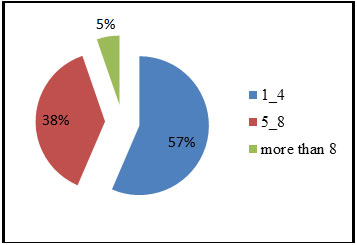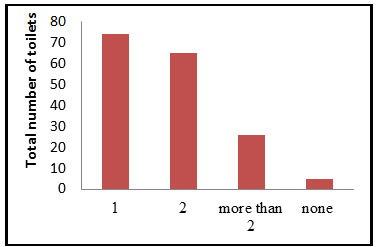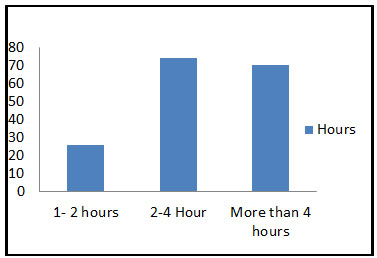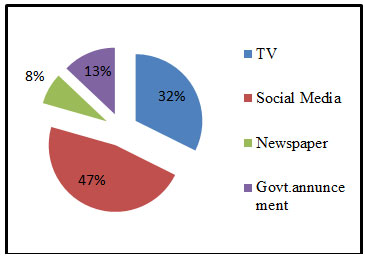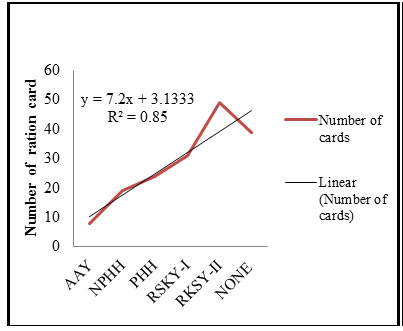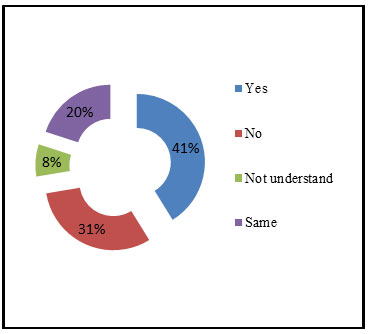1Department of Zoology, Nistarini College Purulia, West Bengal, India
2*Department of Zoology, Bankura Sammilani College, Bankura, West Bengal, India
Corresponding author email: rpmondal09@gmail.com
Article Publishing History
Received: 18/10/2020
Accepted After Revision: 14/12/2020
The pandemic of coronavirus (COVID-19) has directly or indirectly affected human civilization and has recently given a tremendous challenge to humanity for leading a normal life. Academic and research activities of students have been very much hampered during this period. Education is an important vehicle through which students can analyze while making life decisions. Through proper education, they will get important knowledge, including basic facts, job skills, and cultural norms values. Education prepares our students to think properly about communication, social interaction, ethics, environment and sustainability. Although online classes are being organized by many educational institutions, rural students face a lot of problems in attending such classes. So, to access the impact of COVID-19 on the educational status of the undergraduate students, an online survey was done in the form of an online Google form and it was circulated to students of Bankura and Purulia district through several Facebook groups as well as WhatsApp and Telegram contacts with the help of college teachers.
The Google form was designed in such a way, that students can respond only one time by using one email and it can be generated using one device at a time. A total of 170 students actively participated in this online survey platform. 37% of respondents said that their average study time decreases during these days. More than 40% of online classes missed by 21% of students and 20-40% of online classes missed by 38% of students due to poor network connectivity in their locality. The number of missed online classes increased during the afternoon and evening because of internet connectivity problems. Sometimes students faced headaches and eye irritations due to the excessive use of smartphones, so few classes were also missed for these reasons. In view of these issues some initiatives are urgently needed to reduce the psychological stress of students during the COVID-19 lockdown situation.
Pandemic; On-Line; Google; Network; Student; Psychological Stress
Mandal A, Mondal R. P. Corona Virus -19 Lockdown and its Impact on the Educational Status of Undergraduate Students of South Bengal, India. Biosc.Biotech.Res.Comm. 2020;13(4).
Mandal A, Mondal R. P. Corona Virus -19 Lockdown and its Impact on the Educational Status of Undergraduate Students of South Bengal, India. Biosc.Biotech.Res.Comm. 2020;13(4). Available from: <a href=”https://bit.ly/2WcW0Qe”>https://bit.ly/2WcW0Qe</a>
Copyright © Mandal and Mondal This is an Open Access Article distributed under the Terms of the Creative Commons Attribution License (CC-BY) https://creativecommons.org/licenses/by/4.0/, which permits unrestricted use distribution and reproduction in any medium, provide the original author and source are credited.
INTRODUCTION
Human civilization has now faced a tremendous challenge from the novel severe acute respiratory syndrome coronavirus (SARS-Cov-2) in different countries. On January 30, 2020, the World Health Organization (WHO) declared Corona Virus Disease (COVID- 19) outbreak as an international public health emergency. Corona virus circulates in some wild animals like bats and transmitted to humans. It can cause severe respiratory symptoms along with symptoms of common cold and fever(Zhu et al.,2020). The disease was first reported in China in December 2019 and now rapidly spread in many countries from Asia, Europe, and Africa(Jones,2020).The disease has now spread to 217countries and territories around the world and the total number of confirmed infected people is 42,055,863 people throughout the globe. In India, the disease was first reported on 30 January 2020 in Kerala from a student who returned from Wuhan, China. Now the total number of confirmed infected people is 7814682 till now across India (24th October, 2020) (WHO, COVID-19 Database). In West Bengal, many districts are also affected by this virus. The main problem of this outbreak is there are no specific treatments for these viruses to date. However, only one can reduce the chances of infection by only maintaining basic personal hygiene and social distancing from infected persons (Rubin and Wessely, 2020; Pulla, 2020).
Most of the people are now primarily restricted to their homes, owing to nationwide lockdowns and home-confinement strategies implemented in the majority of the COVID-19-hit countries to prevent the spread of the disease among communities (Rubin and Wessely,2020; Pulla,2020).This outbreak directly has hampered the normal lifestyle of people; many persons have lost their jobs and are facing tremendous mental stress. Due to the global outbreak of corona virus disease (COVID-19), the psychological issues have rapidly increased the public health burden of various persons (Totaleset al., 2020). Similarly, in this situation, the daily schedules of school, college, and university students are very much hampered and delays in academic activities mostly affected due to the closure of academic institutions (Cao et al., 2020). For college students, heightened levels of psychological distress and downstream negative academic consequences are prevalent under normal circumstances. During this adverse situation, education institutions shifted their classroom teaching to an online mode of teaching which would be expected to create academic stress for students. This creates a lot of problems in India because as per the 2017-18 national sample survey report only 24% of Indian household share internet facilities for education (Cao et al., 2020).
66% of the Indian population lives in rural areas where network connectivity is poor and only a little over 15% of rural households have access to internet services. In urban areas, only 42% of the population have access to internet services. More than 40% household has access to the internet in the states like Punjab, Kerala, Delhi, Uttarakhand and Himachal Pradesh whereas the proportion is less than 20% in the states of West Bengal, Bihar, Odisha, Assam, Andhra Pradesh, Jharkhand (Mukherjee and Roy,2020). During this online mode of teaching, students may experience reduced motivation toward studies, increased pressures for self-learning, changes in daily routines, and higher rates of dropout occur during this pandemic situation(Grubicet al.,2020).
In south Bengal regions, good percentages of student belonging to SC/ST/OBC and minority categories and many of them are even first-generation learners. This region is economically backward and no big industries are established in these regions. Students of this region are very talented, hard-working and procure top positions in board examinations in different University examinations in comparison to other districts of West Bengal (Mukherjee and Roy, 2020).In this background, the present study was planned online to evaluate the consequences and impact of Covid-19 lockdown among undergraduate students of South Bengal, India. During the online survey mainly students from two districts namely Bankura and Purulia were targeted. Through this study, we tried to understand their sociological status, mental health condition, pros and cons of the online mode of teaching during the lockdown situation.
MATERIAL AND METHODS
For understanding the impact of Covid-19 lockdown among undergraduate students of South Bengal, India, an online survey was conducted from 11th August to 24th August 2020. The survey was done in the form of an online Google form and it was circulated to students of Bankura and Purulia district through several Facebook groups as well as WhatsApp and Telegram contacts with the help of college teachers. The Google form was designed in such a way, that students can respond only one time by using one email and it can be generated using one device at a time. Due to the online mode of the survey, we specified our eligibility criteria (only students of South Bengal, India) to restrict its spread to a specific geography. The self-administered a questionnaire consisting of basic information about the students’ names, age, gender, and the semester of study. Similarly, other questions were set to evaluate the effect of lockdown on their study, health as well as to understand the socio-demographic standards and psychological effects. The questionnaire was also included related to COVID-19 disease, its health hygiene, and information gathering related to this disease during the lockdown.
RESULT AND DISCUSSION
A total of 170 responses were obtained from undergraduate students in the study period through the Google form survey platform. The data collected from respondents were analyzed and presented in Figures. Among 170 respondents, 26% of responses received from final six-semester students, and only 9% of responses received from new second-semester students. Other semester students moderately participated in this online survey. The data are shown in Figure I revealed that 57% of students belonged to nuclear families and only 5% of student have belonged from joint family. The data shown in Figure II revealed that the majority of the respondents (44%) had only one toilet in their house and only 3% of students had no toilet, and family members still used open space for the toilet (Mukherjee and Roy, 2020).
Figure 1: Number of family members in each student
Figure 2: Number of the toilet in each student family
The data shown in Figure III revealed that the average time of use of smart phones increased in the majority of the respondent’s during the COVID-19 lockdown period. Out of 170 respondents, 70 students regularly used smart phone more than 4 hours in social media and 74 students used 2-4 hours in social media and it will directly affect the academic performance of students. Most respondents admitted that their study time decreased during the lockdown period. According to the internet and mobile association of India report 2019, 67% of men had access to the internet whereas in women it is only about 33%. This type of gender-wise disparity is very much prominent in villages areas where 72% of access done by men and 28% by women. But due to pandemic situation students are forced to attend their online classes so the disparity reduced from percentage proportion of men: women of72:28(all India level) to 58:42 (approx.) in south Bengal regions (Mukherjee and Roy, 2020).
The data shown in Figure IV revealed that during lockdown majority of the respondents (47%) received information related to COVID 19 and its precautions through social media like WhatsApp and Facebook. 13% from television, 13% from the governmental announcement, and 8 % from the newspaper. According to Dubey et al.,(2020)social media must be used for good purposes to educate people about symptoms and transmission COVID -19 diseases during this pandemic situation. At the same time implementation of strict governmental laws and legislation is needed to stop the spreading of fake news, rumours, disinformation, and misinformation (Dubeyet al.,2020).Similarly, Guptaet al., (2020) documented that the sleep pattern of respondents was very much influenced by the lockdown. Shift to a later bedtime, delayed sleep onset, daytime napping increased are very common among many people’s (Gupta et al., 2020). Similarly, more than 40% of people faced anxiety and depression during this lockdown and pandemic situation (Grover et al., 2020).
Figure 3: Average time of Smartphone used during lockdown
Figure 4: Awareness creates against COVID-19 19
Figure 5: Types of ration card among student family
Figure 6: Bodyweight change during the lockdown
The data shown in Figure V revealed that most of the respondents have RKSY types of ration card and few students came from economically backward family. Till today few families do not have any ration cards. So, students from economically backward suffer a lot to attend the online classes. Similarly, the data shown in Figure VI reveals that 41% respondent gains their body weight during lockdown period because of leading sedentary life. The data were shown in Figure VII revealed that among all, 21% of students missed more than 40% of online classes, 38% missed 20-40% of online classes due to poor network connectivity in their locality. The number of online classes missed increases during the afternoon and evening because of connectivity problems as well as the exhaust of net data pack due to spending more time with smart phones during the daytime by students. Another survey also supported that due to closure of the educational institution, loss of classes and restricted social connections worsened pre-existing mental health conditions of 83% of young respondents(Youngminds,2020).
Dangi and George (2020) also showed that 76.44% of students suffered severe anxiety and 23.66% of students were having moderate anxiety in this lockdown period in their study area (Dangi and Mathew,2020). Sometimes students face headaches and eye irritation due to the use of excess time on smart phones so few classes also missed due to this reason. During the lockdown period, students were compelled to stay at home so during leisure time students learn many things. Girl students learned to prepare many food items from the internet, some prepare beautiful drawings as well as stitch work. Boys also spend time with physical exercise and nature study of their surroundings by using smart phones. Few students actively took part in many international and national online webinars which allow them the opportunity to listen to many things from reputed resource persons from home during this lockdown period (Dangi and Mathew, 2020).
Figure 7: Missed online classes due to poor internet connectivity
CONCLUSION
In the last two decades, mankind faced five pandemics like SARS (2002), Swine flu (2009), MERS (2012), Ebola (2014), and COVID-19 (2019). COVID-19 produces long-lasting effects on the various strata of people in society including students. The current pandemic situation does not obey the geographical boundary, race, religion, caste, and language. It creates psychological, social, economic, religious problems as well as depression and anxiety among people all over the world. It also produces immense agony among student fraternity who are already burdened with their semester and competitive exams, research and academic activities. This study showed that students are trying to adapt the new mode of online teaching but 21% of students missed more than 40% of online classes due to poor network connectivity in their locality. This creates a lot of mental anxiety among students along with loss of study time and restricted social connections. So, to reduce mental weakness and anxiety, educational institutions should have to conduct motivational sessions and set up one mental health helpline number. Arrangement of awareness programmes at both personal and community levels is urgently needed to reduce the psychological stress of students during the COVID-19 lockdown situation.
ACKNOWLEDGEMENTS
We want to acknowledge Principal, Bankura Sammilani College, Bankura and Principal, Nistarini College, Purulia for the help and support for conducting the survey work. Thanks are also due to the student respondents who have actively participated in this online survey.
Conflict of interest: The authors declare that they have no conflict of interest.
REFERENCES
Cao, W., Fang, Z., Hou, G., Han, M., Xu, X., Dong, J and Zheng, J. (2020). The psychological impact of the COVID-19 epidemic on college students in China. Psychiatr.Res,287: 112934.doi: 10.1016/j.psychres.2020.112934.
Dangi, R.R and Mathew, G. (2020). Psychological Perception of Students during COVID-19 Outbreak in India. High Technology Letters, 26(6): 142-144.
Dubey, S., Biswas, P., Ghosh, R., Chatterjee, S., Dubey, M.J., Chatterjee, S., Lahiri, D and Lavie, C.J. (2020). Psychosocial impact of COVID-19 Diabetes and Metabolic Syndrome: Clinical Research and Reviews, 14 (2020): 779e788 https://doi.org/10.1016/j.dsx.2020.05.035
Grover, S., Sahoo, S., Mehra, A., Avasthi, A., Tripathi, A., and Subramanyan, A. (2020). Psychological impact of COVID‑19 lockdown: An online survey from India. Indian J Psychiatry, 62:354-62.
Grubic, N., Badovinac, S., and Johri, A.M. (2020). Student mental health in the midst of the COVID-19 pandemic: A call for further research and immediate solutions. International Journal of Social Psychiatry, 66(5): 517– 18.
Gupta, R., Grover, S., Basu, A., Krishnan, V., Tripathi, A and Subramanyam, A, (2020). Changes in sleep pattern and sleep quality during COVID‑19 lockdown. Indian J Psychiatry, 62:370-78.
Jones, D.S. (2020). History in a crisis – lessons for covid-19. N. Engl. J. Med,382, 1681-1683.
Mukherjee, S.K and Roy, A.K. (2020). A Statistical Survey of On-line Class – Performances in different Colleges under Bankura University. Innovation the research concept, 5(6): E16-22.
Pulla, P. (2020). Covid-19: India imposes lockdown for 21 days and cases rise. BMJ 2020; 368: m1251.PMID: 32217534.
Rubin, G.J and Wessely, S. (2020). The psychological effects of quarantining a city. BMJ, 368:m313. doi: 10.1136/bmj.m313. PMID: 31992552.
Torales, J., Higgins, M. O., Castaldelli-Maia, J. M and Ventricle, A. (2020). The outbreak of COVID-19 coronavirus and its impact on global mental health. International Journal of Social Psychiatry, 66(4):317-20.
Youngminds, Y. (2020). Coronavirus: Impact on young people with mental health needs. https://youngminds.org.uk/ media/3708/coronavirus-report_march2020.pdf
Zhu, W., Xie, K., Lu, H., Xu, L., Zhou, S and Fang, S. (2020). Initial clinical features of suspected Coronavirus Disease 2019 in two emergency departments outside of Hubei, China. J. Med. Virol, 1525-32. doi:10.1002/jmv.25763

